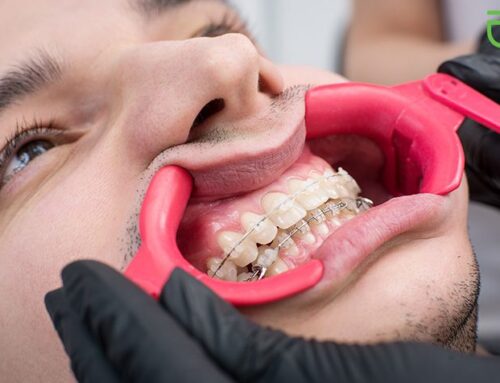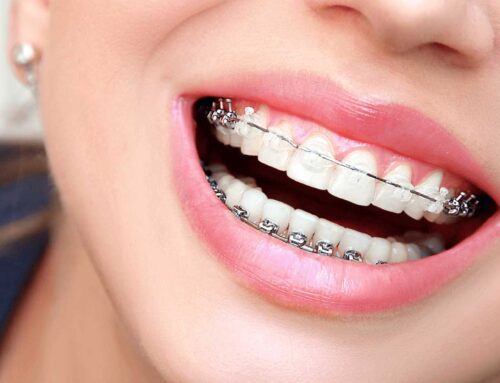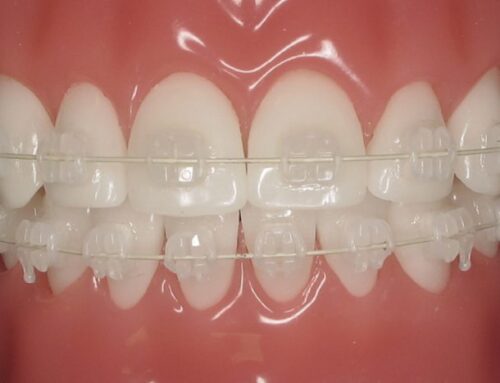Costs & Financing for Braces & Orthodontics
Before you get started with orthodontic treatment to straighten your teeth and get the beautiful smile you deserve, you’ll likely have lots of questions about how much things cost and what you can expect. There are many different factors that can affect the total cost of braces, but there are multiple options available to help manage the costs of orthodontic treatment and make the entire process easier.
There’s an old saying that goes something like ‘you can’t put a price on your health’. It’s a wonderful thought and does a good job of conveying that having good health is something we should all take very seriously. However, the reality is that there are an awful lot of price tags associated with taking care of ourselves. Braces and orthodontics are very important for many patients as part of their dental health, but certainly cost more than the normal day-to-day dental care expenses such as a new tube of toothpaste or bottle of mouthwash. So, what do patients need to know about the cost of braces before they get started with orthodontic treatment?
Here, we will provide all the clarity patients need to understand exactly what to expect when committing to orthodontic treatment to correct misalignments in the teeth and obtain a straighter, more uniform-looking smile. To begin, we will review the average cost of undergoing a typical orthodontic treatment plan in Canada and what is included throughout the process.
How Much Do Braces Usually Cost?
The total cost of braces can vary substantially based on a variety of different factors including the type of braces being used, the duration of treatment, the specific needs of the patient, and any additional steps or procedures that may be required outside of the typical orthodontic treatment plan. In general, the average cost of braces in Canada comes in around $5,000. In some cases, patients could expect to pay as little as $2,000 – $3,000 for a short-term or simpler treatment, whereas other patients in need of more substantial adjustment over a longer period of time could see total costs rise upwards of $7,500 or more.
Why Do Some Types of Braces Cost More Than Others?
There are several styles of braces that can be used to straighten teeth, each with different components and characteristics that determine how they work.
Traditional Metal Braces – This is the style of braces which you are likely the most familiar with. They consist of metal brackets affixed directly to the teeth, metal arch wires which run through the brackets and connect the braces together, and elastic ligatures which hold the arch wires in place on the brackets. The arch wires are shaped in such a way that when they are placed into the brackets, they exert a gentle yet constant pressure on the teeth in specific directions. Over time, this pressure gradually moves the teeth into the final desired position.
Metal braces must be adjusted at regular intervals in order to achieve continual progress in the movement of the teeth. These adjustments usually occur monthly, where the patient will come into the clinic for a checkup and have the next progressive arch wire put in place and the ligatures replaced with new ones.
Ceramic Braces – Although identical to traditional metal braces in terms of how they function to move teeth, ceramic braces differ in the materials used to manufacture the brackets. In order to provide a more subtle appearance, ceramic brackets are made using a clear or tooth-coloured ceramic composite material. Once mounted on the teeth, they are much less noticeable than their metal counterparts. As these ceramic brackets are more expensive than standard metal brackets, the cost of ceramic braces is a little higher overall.
Fast Braces – Also known as accelerated braces, fast braces are very similar in appearance to traditional metal braces, but utilize unique bracket designs in order to speed up the movement of teeth and reduce total treatment duration. In addition, fast braces are used in conjunction with special phototherapy and subsonic wave therapy treatments. These therapies stimulate the gums and underlying tissues to increase the ease at which teeth are able to be repositioned, thereby improving overall comfort for the patient and cutting treatment times by as much as 50% in some cases. For example, for a patient that would have expected traditional braces to take 18-24 months to complete the process, fast braces could achieve the same results in as little as 12 months. This makes fast braces a very appealing option for many patients. However, due to the specialized designs and additional therapies needed, the cost of fast braces will come in higher than traditional metal braces.
Invisalign Invisible Braces – In recent years, an innovative and unique approach to orthodontics has rapidly gained popularity across Canada. While traditional types of orthodontics require brackets and wires attached to the teeth, Invisalign uses slim, clear plastic tooth aligners to exert the necessary pressure on the teeth to reposition and realign them over the course of treatment. This approach offers distinct advantages to the patient. First, the smooth, lightweight aligners are very comfortable to wear, and they fit so snugly against the teeth that many patients occasionally forget they are even wearing them. Second, Invisalign aligners can be removed and replaced at any time by the patient, making it easier to eat and maintain their regular oral care routine. Lastly, Invisalign aligners are virtually invisible when worn, thanks to the crystal-clear composite material used to make them.
Furthermore, rather than visiting the dental clinic for monthly adjustments to traditional braces, Invisalign patients wear each set of progressive aligners for about two weeks. At which time they simply discard the previous aligners and begin wearing the next set in the treatment sequence. In general, Invisalign treatments take about the same amount of time as traditional braces, but because of the advanced technology used to create the Invisalign aligners, and the number of aligners that are used throughout the treatment, Invisalign does tend to cost more than some other types of braces.
What Other Factors Affect the Price of Orthodontic Treatment?
In addition to the type of braces that the patient receives, there are several other considerations that can influence the total cost to be either above or below the average.
Length of Treatment – The exact length of the treatment can vary quite significantly from patient to patient. If only minor adjustments to a few teeth are needed to achieve the desired result, then treatment times can be fairly short. In other cases, if there is extensive movement required across both the top and bottom arches, it can take much longer to complete the process. Naturally, the number of adjustments and appointments needed throughout the treatment plan will affect the total costs.
Additional Procedures Before, During or After Treatment – In some cases, patients require specific procedures in order to assist with the orthodontic treatment plan. For example, if overcrowding of the jaw is a problem that must be remedied before braces can begin, a tooth extraction may be scheduled to alleviate the crowding and provide enough space to obtain the optimum position for the teeth. Other procedures may include the phototherapy or subsonic wave therapy sessions that are common with patients who receive fast braces.
Accidental Damage – Accidents happen. When a sudden impact or fall causes part of your braces to break or become damaged, you will need to seek immediate attention and obtain a full examination to determine the best course of action. If any repair or restorative work is required, this could include replacement of some components of the braces.
Improper Dental Care Habits – It’s vital that the patient takes excellent care of their mouth while undergoing orthodontic treatment. Failure to properly clean the teeth can result in a wide range of dental health issues that can lead to complications and problems that would require supplementary treatments and procedures to correct.
The truth is, no two patients will have an identical experience when it comes to orthodontic treatment. This also means that no two patients will have braces that cost exactly the same. To get a more detailed picture of what braces might cost for your specific needs, the best thing to do is to schedule an orthodontic consultation to have all your questions answered.
Are Braces Covered by OHIP and Government Health Insurance?
Unfortunately, no. Braces and orthodontic treatment is not covered as part of OHIP or other public health coverage in Ontario. These plans are generally limited to emergency dental care services that would be delivered in a hospital environment, such as emergency tooth extractions, severe trauma to the mouth or jaw, or other potentially life-threatening conditions.
Do Dental Benefits Plans Cover Braces?
In some cases, yes. However, the coverage for orthodontics contained within many employee benefits plans can be very limited to only cover specific types of braces, or up to a limited dollar amount. In the event that your benefits plan does cover orthodontics, be sure to get complete details of what is covered and what is not, along with the maximum allowable coverage amounts, so you have clear knowledge of what you are entitled to.
Can I Apply for Financing for Orthodontic Treatment?
The good news is that you can obtain financing for orthodontic treatment to help make managing the costs much easier, and ensure that you can get the proper dental care you need for a great looking smile. At Georgian Dental, we are proud to offer our patients a wide range of in-house financing options for their dental care needs. The process is simple, and we will be glad to explain all the details with you as part of your no-obligation consultation. Simply book an appointment with us today to get started down the road to a beautiful smile with orthodontics from Georgian Dental!
Appointment Request
If you’re interested in any of our procedures, and would like to meet with one of our dentists to discuss options, costs and get additional information, complete this short form and we’ll give you a call to arrange for a no-obligation appointment at our Barrie clinic.










